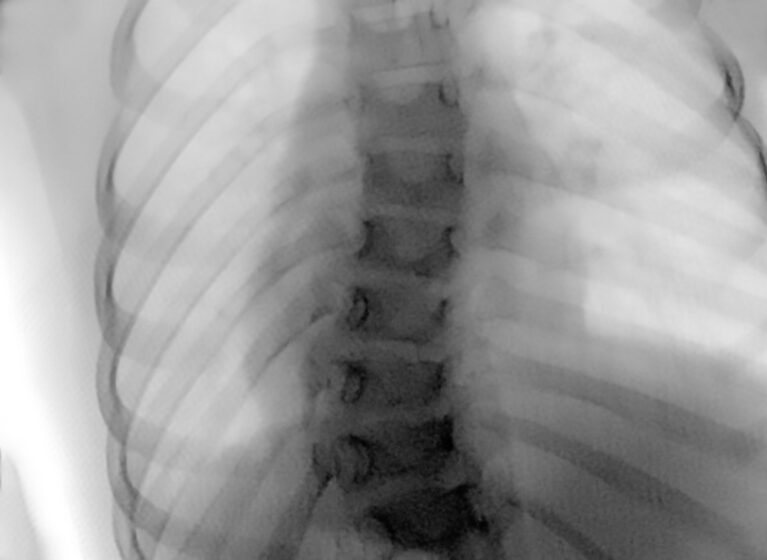
Every provider wants to help their patient pick the best option for their present as well as their future. For pediatrics, that dilemma is even more pronounced. Selecting a scoliosis treatment that keeps a patient’s options open, while providing support now, is a delicate balancing act.
By participating in the internationally recognized Harms Study Group (HSG), a multi-site study on bracing and casting, and participating in the ApiFix trials, UVA Health Children’s Orthopedics is evaluating the full spectrum of possible treatment options, as well as considering relevant patient variables. Most importantly, we’re following up over time to answer key questions like:
- Will the 18-month-old braced for scoliosis continue to excel as a teen?
- And as they enter adulthood or pursue parenthood, will their scoliosis treatment have emerging long-term complications?
“The global impact of these studies is profound. The information gleaned from this database is not only helping with idiopathic scoliosis patients, but it is also producing answers to important clinic questions for our patients with cerebral palsy and scoliosis and our neuromuscular disease patients with scoliosis,” says Nancy McKnight. She’s a UVA Health Children’s clinical research coordinator working on these decades-long studies.
Driven By Long-term Data, Not Trends
UVA Health Children’s is well positioned to drive the field forward on several fronts, including:
- A research coordinator for every division of orthopedics
- Participating in multiple long-term studies
- Dedicating time to long-term follow-up
All this represents a significant time and financial investment, but it’s worth it, according to Keith Bachmann, MD, a pediatric orthopedist who specializes in treating scoliosis patients.
“It’s about staying on the cutting edge,” he explains. “And not chasing the trends. If it’s new or innovative, we want to explore it. But we want to do it the right way. We’re going to actually follow through on these pursuits and find out what they can offer.”
He adds, “Our research coordinator infrastructure is necessary for participation in these national and international studies.”
Insights Already Gained Through Decades of Research
Long-term follow-up allows for insights that most stand-alone children’s hospitals wouldn’t be able to collect easily. For example, when a scoliosis patient from our early trials starts prenatal care with UVA Health, we’re able to see long-term data that’s valuable for patients considering spinal fusion now.
McKnight says,” Several of our early subjects have had children so to capture the outcomes of pregnancy and childbirth after having had spinal fusion is invaluable.”
According to Setting Scoliosis Straight, the public information side of the Harms Study Group, these are some of the insights we’ve gained about pregnancy after spinal fusion:
- No increase in risk of premature birth
- No reported increase in back pain
- No increase in medically necessary C-sections
Will knowing that make it easier for a child’s parent to make the choice to have spinal fusion surgery? It certainly reduces some concerns. And gives clinicians answers that help patients feel informed as they navigate diagnoses that may seem overwhelming.
A Research Destination
UVA Health Children’s was one of the early participants in the HSG, and we’ve continued our involvement for over a decade. Our early involvement began when HSG expanded into neuromuscular scoliosis research. Because of UVA Health Children’s patient population, we have a more even distribution of patients with:
- Adolescent idiopathic scoliosis
- Neuromuscular scoliosis
- Congenital scoliosis
- Early-onset scoliosis
For many of these patients, as they become adults, they’ll transition from UVA Health Children’s into UVA Health’s care. This transition of care makes UVA Health a valuable partner for long-term research. Babies born with congenital scoliosis can be seen in the NICU and continue to be seen into adulthood. In many instances, they may no longer need orthopedic care, but can still be followed through other specialist or primary care appointments.
The Role of a Research Coordinator
Making sure data is verified, keeping track of consent forms, and following up with research study participants is a challenge. But according to McKnight, working on these decades-long studies, is rewarding on two fronts:
- Knowing that the impact of this research will help many more patients
- Getting to know these families and watch participants grow up
This sort of follow-up is unique. While most pediatric orthopedists only do follow-up for 5 years after spinal surgery, these studies focus on patients’ transition into adulthood. “Our earliest patients are now adults in their upper 20s; many of them are having major life experiences like having careers and starting families,” McKnight adds.
For many patients, the effect of their surgery has been dramatic. Some of the research study patients for early onset scoliosis are now toddlers. Every 6 months at their follow-up, it’s easy to see their progression. For others, it’s harder to quantify their experience, but McKnight sees the change in quality of life for them and their families, especially for the CP patients. “It makes me happy to see how the surgery can improve their child’s quality of life. Treatment can make them more comfortable, allow them to sit longer, and decrease pain. It can also make it easier for the parent/guardian/caregiver to care for them.”